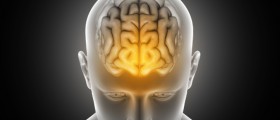
Many people suffer from strong, repetitive and frequent headaches named migraines. Basically, while some may experience these scarcely, others may be bothered by them quite often. In the same manner, while one individual may experience only mild headaches, another may suffer from pain severe enough to trigger hallucinations or even vomiting.
Therefore, suffering from migraines is a state of affairs which needs to be taken care of as soon as possible. However, before any treatment for this condition can take place, it needs to be properly diagnosed and this can present quite a problem.
Migraine Headaches Trouble
Most commonly, the main cause behind migraine headaches is vasodilatation or the enlargement of the blood vessels, leading to a release of special nerve chemicals which affect the large arteries in the brain area. Due to the fact that these arteries stretch the nerves around them once they become larger, they trigger the production of chemicals which further precipitate inflammation and some other signs of migraines such as headaches and general pain. Moreover, as the arteries get larger and larger, the symptoms of migraines become more severe.
Since these arteries affect our body’s sympathetic nervous system, the above described changes lead to nausea, vomiting and diarrhea in some cases. Additionally, the nervous system prevents the emptying of the small intestine, making it impossible for oral medications to have any effect on the headaches that one is experiencing. Therefore, most people who suffer from headaches fail to find relief in oral medications such as painkillers.
Furthermore, the changes in the sympathetic nervous system lead to a decrease in blood circulation, causing skin pallor and coldness in the hands and the feet, as well as some other, more or less typical signs of migraines such as sensitivity to light and sounds, blurred vision etc.
Today, more than 28 million of US citizens suffer from migraines. This means that about 17% of the total female population has problems with these types of headaches, while with men it is less common, affecting 6% of all male members of the country’s population. Migraines have a great impact on annual statistics related to absence from work and decreased productivity. Also, this condition is commonly misdiagnosed, leading to unnecessary medical and treatment expenses. In fact, more than a half of all migraine cases are left undiagnosed.
Therefore, migraines are a problem which needs to be taken more seriously and address properly since the impact the condition has on our society as a whole is not a small one.
Methods for Diagnosing Migraine Headaches
Keeping in mind that not all cases of migraines are connected with headaches, doctors and other health practitioners need to pay attention to many symptoms characteristic for this problem in order to give a proper diagnosis and choose adequate treatment for their patients.
Most migraine cases are intense and recurring, being throbbing or pounding, affecting a single temple. However, the headaches may affect some other parts of the head such as the forehead, the area around the eyes or the back of the head.
Most commonly, the pain affects just a single side of the head. Nevertheless, in about 1/3 of all cases it can appear in all parts of the head, making matters much worse. Moreover, the first case may be changing sides, from one side of the head to the other. However bothersome this might sound, it is a better scenario than persistent headaches affecting a single side of the head, since these may be signs of a brain tumor.
Usually, people who suffer from migraines experience the onset of the symptoms once they perform some daily activities like climbing the stairs, bending, exposing themselves to mental stress etc. When headaches related to migraine strike, especially when these occurrences are accompanied by vomiting, nausea, coldness in hands and feet and some other signs, most sufferers find the only relief in lying in a dark quiet room. Yet, taking into consideration than an average migraine attack may last from 4 to 72 hours, this might be quite an agony.
Fortunately, most migraine sufferers are capable of noticing some of the warning signs of serious symptoms. Therefore, doctors are on the lookout for these during diagnosis. These are sleepiness, nervousness, tiredness, depression or euphoria, yawning and strong craving for sweets and salty meals. Also, 20% of migraine sufferers experience an aura, being the appearance of flashing lights or blind spots during attacks.
Is MRI of any Use with Headaches?
Your doctor may recommend MRI scanning if your headaches cannot be diagnosed without it, especially if the CT scan fails to reveal the culprits. The MRI can reveal brain tumors, infections, abnormal build-ups of fluids, problems with the spinal cord, strokes and many other types of injuries, being more than adequate for the diagnosis of migraines and the causes behind them.
However, an MRI scan may not be suitable for you if you are pregnant or have a heart pacemaker, an implanted insulin pump, an ear implant, spine stabilization rods, GERD, lung diseases or claustrophobia. Also, MRI scanning is not recommended for people who cannot lie on their back for more than 30 minutes and people who are obese.
Thus, if you do not belong to the above mentioned group, MRI scanning may be a crucial factor in the diagnosis of your migraine problems.















Your thoughts on this
Loading...